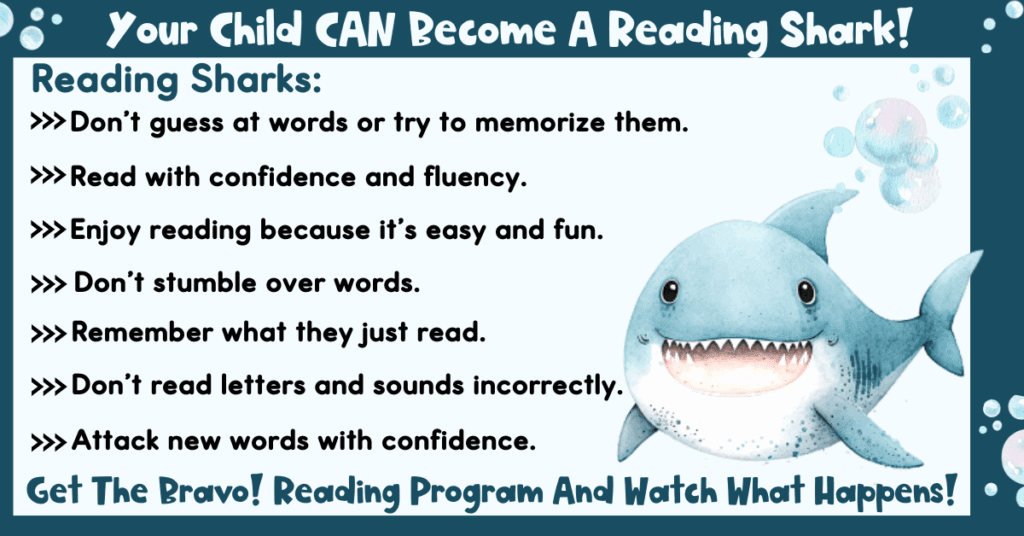Visual Processing: Making Dyslexia Better
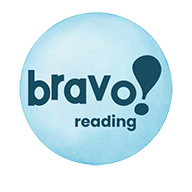
Visual processing disorders can make reading and learning very hard for some kids, and these problems are often similar to dyslexia. When children have visual processing disorders, their brains have trouble understanding what their eyes see. This can make it hard to recognize letters, words, and patterns.

Dyslexia mainly affects how kids understand language, but having visual processing disorders can make it even harder. Knowing about both these issues can help us find the best ways to help kids read and learn better.
By working on both, we can help them do well in school and feel more confident.
Can you imagine trying to read with your eyes closed? That sounds ridiculous, right? Yet kids with dyslexia struggle to process visual information to the point you might wonder if their eyes aren’t indeed closed. Although they may or may not have visual processing disorders, the way they process information can mimic it.
Reading is primarily a visual process. Even though the auditory component is important when your child reads, visual processing skills take the front seat. Visual processing skills are those we take in through sight, and if these skills are weak, it can be an indication of visual processing disorders.
But there’s more to all this whole equation than what you’d think…
How Kids With Dyslexia Interpret Their World
When your child looks out into the world, the brain interprets the visual information seen in a manner that allows your child to give meaning to it. The brain will then give your child feedback regarding what was seen – such as the size, distance, and shape of these objects.

From there, your child can discriminate between subtle differences among those objects seen in space. Once again, if this ability to interpret information is weak, visual processing disorders might be at play.
We take in light with our eyes but do the actual processing of visual stimuli in our brains. That’s one reason why kids with dyslexia struggle to read. By definition, their condition is one of neurodevelopmental origin. This simply means they are “wired” differently than others. If your child is wired differently than others, then most likely, a visual processing disorder is at play. This has nothing to do with their intelligence, as kids with dyslexia are indeed bright kids!
One of the main areas that kids with dyslexia struggle with, though, are visual processing skills. At one point, professionals thought that dyslexia was primarily a visual problem. But new research lets us know there’s an auditory component as well. Today, we have enough information to separate dyslexia from visual processing disorders, even though the two disorders can mimic each other.
Visual Processing: More Than Just A Learning Sense
Did you know we take in from 75 to 90% of our information visually? This makes vision our primary learning sense. Because this learning sense is so strong, there are a lot of things that can go wrong! Kids who struggle to process visual stimuli will usually struggle in school, especially with reading.

Many kids have visual processing disorders that don’t get diagnosed. They fail at reading and at school, often thinking they are aren’t as smart as others. These kids lack self-esteem when a simple fix could have made the entire difference.
When something goes wrong while processing visual stimuli, visual processing disorders are often at play. A visual processing disorder means your child is having a difficult time processing visual information.
Kids with dyslexia really struggle with visual processing skills. This, of course, affects reading, as reading is primarily a visual skill.
Think about a classroom and all the visual information a child has to look at while there. How about doing homework or answering questions on a math page?
All are heavily reliant on visual processing skills.
Reading and Visual Processing Disorders – It’s All In The Eyes!
If a child has dyslexia, then visual processing skills are disrupted, and reading is a chore. The information gets skewed in the child’s brain, and the output isn’t what it’s supposed to be. Kids with dyslexia will often avoid reading at all costs because of this! Sometimes, reading can even be painful to a kids with dyslexia or visual processing disorders.

Kids with dyslexia and weak visual skills usually have a difficult time reading. Decoding is especially difficult. Oral reading is most likely choppy and irregular. If your child has dyslexia or a visual issues, then stammering and stuttering might be the norm.
Fluency scores are low, and because of this, comprehension is usually affected in a negative way.
Think about it. If visual information is coming in incorrectly, it’s hard to make sense of letters or words. In addition, these same letters or words might be reversed or appear backward, upside down, or slanted. These kids will skip lines while reading, sometimes even skipping whole paragraphs.
In addition, when kids have dyslexia or visual processing disorders, then copying information from one surface to another can be a brutal event.
And, this doesn’t just affect writing. Lining up math problems is a chore as well. These kids will also be messy, disorganized, and seem “lost” a lot of the time.
In A Visual Processing Haze: Subtle Differences Between Objects
Kids with dyslexia and visual processing disorders have a hard time telling the subtle differences between letters, words, pictures, and numbers. This confuses them, and often, answers are wrong, the process of sorting it all out too difficult. Comparing and contrasting in written work can be unbearable for them.
In order to correctly process visual stimuli, a child must have proper binocular vision. This is where two eyes work together to make one image. Kids who struggle in this area might not be able to coordinate both eyes with each other.
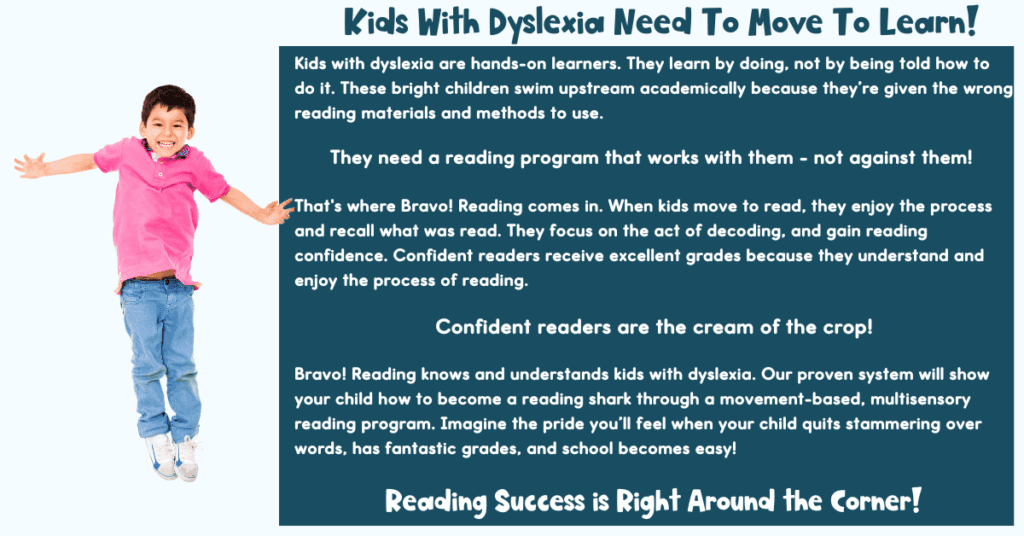
Breakthrough – The Connection Between Visual Processing Disorders and Dyslexia!
Obviously visual processing disorders are not intelligence issues, yet every day kids with dyslexia and other visual issues are made to feel less intelligence when in fact, they are quite bright. They are just processing visual information differently than others.

The images they take in might be blurred, Letters and numbers might have halos around them. Print might be distorted, reversed, or slanted.
Since these kids were born this way, they can’t imagine thinking or learning another way. They can’t come to us and let us know something isn’t quite right, because it’s the only way they know!
Another thing that can affect visual processing is weak eye muscle movement. Our eye muscles must be strong and move fluidly across a page in order to read efficiently. Each eye has six muscles holding it in place. Like any muscle in the body, weaknesses can occur. Or, the muscles might not allow the eyes to line up correctly, and this affects how the student processes visual information.
It’s All In The Processor – Visual Information
There are numerous visual processing skills that your child needs to use in order to process visual information and stimuli correctly, especially for reading. If your child struggles in one visual area, it will affect another, as these skills all need to work together as a team for optimal results to occur.

If one or two visual processing skills are weak, the others can sometimes pick up the slack, but most of the time, an avalanche of reading failure occurs when visual processing skills are weak. That’s why your dyslexic child’s reading program needs to have a lot of visual cues, picture, and colors. It also should be brain based to help your child naturally learn instead of forcing information down your child’s throat.
Kids with dyslexia are almost always weak in visual processing skills, although they can also have “gifts” in this area as well, as they see things in ways we don’t or can’t. Often, adult dyslexics become architects and mechanical engineers, learning how to channel their visual “gifts” in a positive way.
But this doesn’t always happen. All too often kids with dyslexia and poor visual processing skills have poor self-esteem, develop social skills problems, and resort to using odd behaviors as coping mechanisms for what they are up against. They might also be diagnosed with visual processing disorders, but that involves taking the child to a professional to get the diagnosis. This rarely happens since focusing skills and eye alignment take the forefront of optometry.
Dyslexia, Visual Processing Disorders, And All The Great Coping Mechanisms
Children with dyslexia and visual processing disorders often develop creative coping mechanisms to manage their reading and learning challenges. These strategies can range from relying heavily on memorization to using context clues to guess words they can’t decode. As a result of their condition, many dyslexic kids become excellent listeners and use auditory learning to compensate for their reading difficulties.

They might also become adept at asking for help or seeking additional explanations from teachers and peers. These coping mechanisms help them navigate daily academic tasks, even when reading remains a significant challenge.
Additionally, children with dyslexia often build strong problem-solving skills and resilience as they find ways to adapt to their learning environment. Some kids develop a keen sense of self-awareness, recognizing their strengths and weaknesses and strategically focusing on their strong suits. These coping mechanisms not only help them survive in the classroom but also build valuable life skills, fostering determination and adaptability in the face of difficulties.
Acting Out And Avoiding – Paying The Visual Processing Price
While some coping mechanisms help dyslexic children manage their challenges, others can be negative and counterproductive. One such negative strategy is “conning,” where a child might pretend to understand or complete assignments without actually doing the work. This can involve copying from peers, using distractions to avoid reading aloud, or making excuses to avoid difficult tasks. These behaviors can mask their struggles temporarily but ultimately hinder their academic progress and prevent them from receiving the help they need.
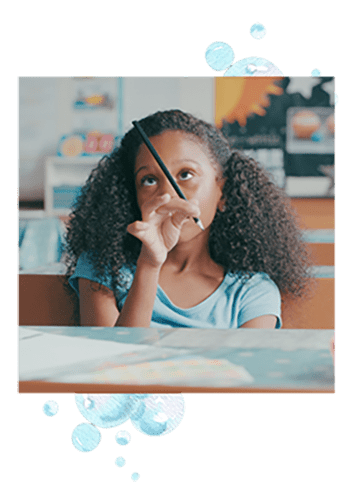
Another negative coping mechanism is acting out, which can manifest as disruptive behavior in the classroom. Children with dyslexia might become frustrated and overwhelmed by their difficulties, leading them to act out to divert attention from their struggles. This behavior can result in disciplinary actions and strained relationships with teachers and classmates.
Acting out can create a negative cycle where the child’s underlying dyslexia goes unaddressed, and their self-esteem suffers due to the constant negative attention. It’s crucial for educators and parents to recognize these signs and provide appropriate support to help dyslexic children develop healthier coping strategies.
Some kids who have dyslexia and/or visual processing disorders learn to power through their condition, finding a way to somehow succeed.
Most don’t.
The Big Double Whammy: Visual Processing Issues And Coping Skills
Add in a visual processing disorder, and children with dyslexia have a double whammy, often resorting to more and more coping mechanisms. Some kids who have dyslexia and/or visual processing disorders learn to power through their condition, finding a way to somehow succeed.
Most don’t.
Most resort to conning, trickery, distractions, and conniving behavior to survive.
48% of our prison population is dyslexic.
It’s obvious. These are the “kids” who didn’t power through, who didn’t find a way to make their “gifts” shine.
Children with dyslexia and visual processing disorders can make progress and learn to succeed. It starts first with a strong reading program designed specifically for kids with dyslexia. A program that lets them move to learn, one that focuses on teaching decoding in a way that makes sense to them, not other children. A multisensory program that takes them from stammering to decoding like a true reading.

All You Need To Know About Visual Processing Skills And How They Affect Reading


Visual Tracking:
This is the ability to move the eyes fluidly across a page. Visual tracking is one of the most important skills for reading yet rarely shows formally in visual processing disorders. The eyes must sweep smoothly across lines of print in order for reading fluency to occur. Kids with weak eye muscles or misaligned eyes have a difficult time with visual tracking.
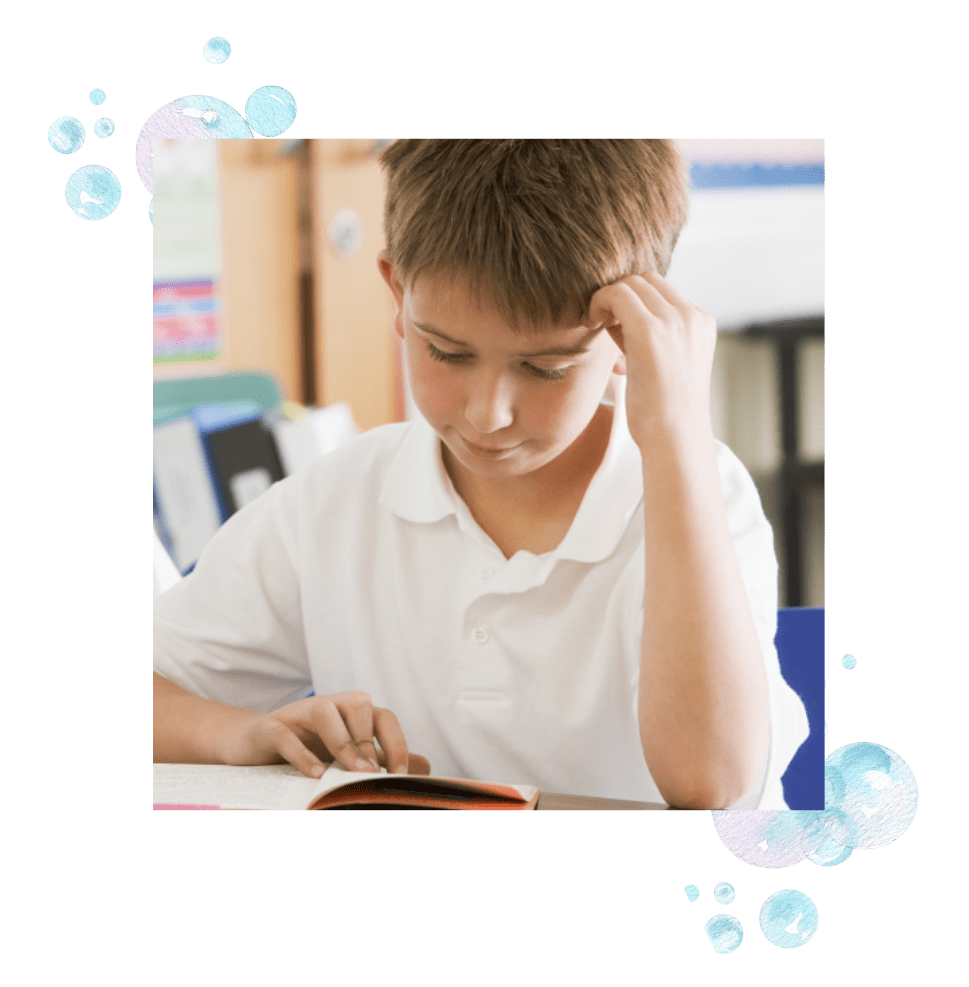
This, in turn, makes it hard to decode letters and turn them into words. Your child will stutter and stammer when reading out loud and take longer than peers to complete assignments if visual tracking is weak. This is because fluency scores are low due to the slowed rate.
There are also important stops and starts that the eye makes while tracking smoothly across a page of print. Problems can occur when the stops take too long or when the stop doesn’t happen at all.
Any disruption to the flow of your child’s eyes moving across the page causes a pause, a glitch of sorts. This stops the flow of reading, which lowers reading fluency scores. Even with the small starts and stops that happen, there must be a natural flow to promote proper expression and the ability to decode rapidly enough for automaticity to occur. Kids with visual processing disorders have a difficult time moving their eyes across a page.
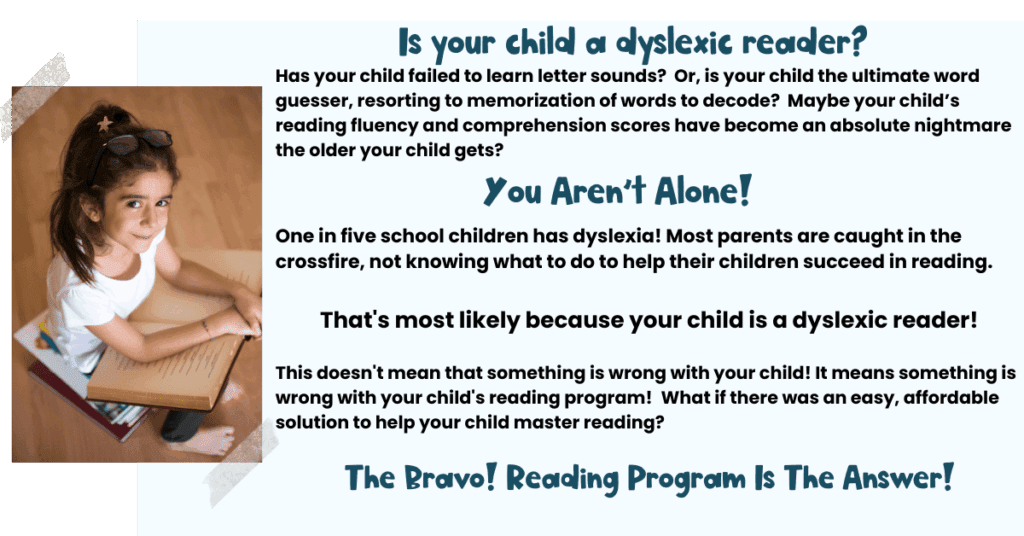
Make Your Child’s Reading Engine Purr!
Automaticity is the ability to do something without consciously thinking about it, and the skill is vitally important for reading fluency to occur. I your child has to think too much and too hard about what the next letter will be, then fluency will be slow. The same is true for the starts and stops with the fluidity of eye movement across a page. When a child suffers with a visual processing disorder or dyslexia, reading automaticity rarely sets in. Reading remains a difficult process.
This back and forth sweeping across the page along with those tiny stops and starts must overall be a smooth, flowing process if reading is to happen naturally.


Eye/hand coordination:
Eye/hand coordination is the ability to coordinate the visual system with information received visually through the eyes while communicating with the hands. When the eyes direct attention to the hands, then the task can be executed.

Many times, a learning block occurs or the information is skewed in communication between the eye and the hand, making eye/hand coordination weak. If your child has weak eye/hand coordination, it will usually first show up in messy drawing and writing that is below expected grade level performance.
Later, it carries over primarily to written work, although reading skills can be affected by it as well. Students with poor eye/hand coordination struggle with writing and performing fine motor skills activities.
Although visual processing disorders usually don’t formally take eye/hand coordination into consideration, it is an important visual skill. If eye/hand coordination is weak, usually another “sister” visual processing skill will be weak as well. For instance, visual motor integration is important for reading and is closely tied to eye/hand coordination.
The Amazing Team Of Eyes And Hands
Although visual motor integration and eye/hand coordination are quite similar, visual motor integration is a more complex activity and plays into reading in many different ways.
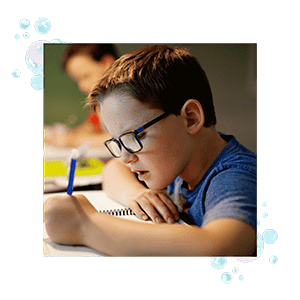
For instance, visual motor integration utilizes eye-hand coordination, but it also involves other visual perceptual skills such as size perception, figure-ground awareness, sequential memory, and visualization.
Eye/hand coordination plays a crucial role in a variety of everyday tasks, from writing and typing to sports and gaming. For kids with dyslexia, challenges with eye/hand coordination can be more pronounced due to the difficulties in processing visual information and translating it into motor actions.
Dyslexia can complicate the development of fine motor skills, leading to struggles with tasks such as handwriting. These challenges can create additional barriers to learning, making it imporant to provide targeted interventions that address both the cognitive and motor aspects of the disorder.
Its Crucial: The Marriage Between The Eyes And Hands
Eye/hand coordination is very important for reading because it helps kids follow the words on a page and point to or highlight them.

This skill helps kids use their finger to follow along, underline important parts, and write notes.
Good eye-hand coordination means kids can move their eyes and hands together easily, helping them stay focused and not lose their place. Without it, kids might find reading harder and get frustrated.
Eye-hand coordination also helps with writing. When kids have good eye-hand coordination, they can control their hands better to write letters and words neatly. It also helps with other reading tasks, like turning pages and using tools like rulers. By getting better at eye-hand coordination, kids can make reading and writing easier and more fun.


Visual Closure:
Visual closure is the ability to visualize a complete image or object when only a portion of it can be seen.

It is a visual perceptual skill and allows us to visualize in our “mind’s eye” to decide what the whole object or image will be.
Visual processing disorders will show visual closure as a skill necessary for school and reading success.
If your child is weak in this skill, then the eyes will individually process every letter or word while reading. This is a clunky, slow process that decreases reading fluency scores.
It also affects comprehension, because the laborious decoding takes so much effort that the reader’s focus isn’t placed on meaning.
Gaps In The Visual Processing Field: Fill Them In And Celebrate!
In addition, if your child is struggling with visual closure, only part of a letter, word, or number might be seen while reading. For instance, part of the letter, word, or number might be erased, misprinted, or covered by a random piece of paper.
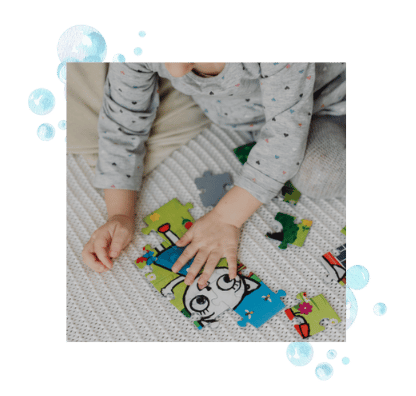
Your child will pause to make a guess at what the letter, word, or number might be instead of letting the brain automatically fill in the missing gaps. This stops the flow of reading, interrupts decoding, and decreases fluency scores. I
f suffering from poor visual closure skills, your child will also lack the ability to predict what letters and words are coming next in a sentence.
If your child struggles with visual closure, it will also be difficult to write letters and numbers. Letters of the alphabet aren’t instantly recognized if this skill is weak. Your child has to visually work to make the image a whole every time it’s seen instead of letting the brain instantly fill in missing pieces upon seeing it.
Read Faster, Read Better For Better Visual Processing
Visual closure skills are very important for reading because they help kids recognize words even when parts of the letters are missing or covered. This skill helps kids understand what a word is, even if they only see part of it.
For example, if a book page has a small tear or if a picture covers some letters, kids with good visual closure skills can still figure out the word. This makes reading smoother and less frustrating.
These skills also help kids read faster and better. When kids can quickly fill in the missing parts of words, they don’t get stuck on each letter and can keep reading the sentence. This helps them understand the story or information better. By practicing visual closure skills, kids can become more confident and efficient readers, making reading a more enjoyable activity for them.


Visual Discrimination:
Visual discrimination is one of the most important visual processing skills of all. It greatly affects reading, especially decoding. It allows your child to see subtle differences between objects, images, or figures. Since letters and numbers fall into the category of objects, images, or figures, reading, writing, spelling, and math are all greatly affected by this visual processing skills.
Don’t Let Your Child Fail This Skill!
If your child is weak in visual processing, it will be difficult to tell the difference between similar letters, such as “h” and “n”. This obviously would change the meaning of a word, which affects comprehension in a negative way. It would also affect reading fluency, as your child would hesitate when realizing the mistake or read the word wrong entirely, both which affect fluency scores.
Following is an example of how visual discrimination errors can change the meaning of text:
Example 1:

Example 2:

If your child struggles with visual discrimination, then focusing on the individual letters of a word while looking at it won’t take place. Your child might also fail to notice likenesses and differences between words as wholes. Perhaps “b” might be seen as “d”, or “bad” as “bed”. This obviously can contribute to reversals issues as well.
How Discriminating Skills Make A Huge Impact In Academics
These lapses in acuity are enough to make your child pause while reading, which slows down fluency and interrupts the flow of learning. It also directly changes the meaning of the letter or word, making it a “misread”. This causes comprehension scores to tank because meaning is obviously changed.

Visual discrimination problems are common with students who have dyslexia, dysgraphia, or dyscalculia.
Visual discrimination skills are really important for reading because they help kids tell the difference between similar letters and words.
For example, visual discrimination helps kids see the difference between “b” and “d” or “was” and “saw.”
This skill is needed to read words correctly and understand what they mean. If kids can easily spot these small differences, they can read more smoothly and make fewer mistakes.
These skills also help kids recognize and remember words better. When kids have strong visual discrimination, they can quickly identify words they’ve seen before, which makes reading easier and more fun. Good visual discrimination helps kids build their reading skills, so they can enjoy stories and learn new things without getting stuck on tricky words.


Visual Memory:
Visual memory is another visual processing skill that greatly affects reading abilities. It is the ability to hold pictures or images in the mind. Poor visual memory can be a component of visual processing disorders. In order to read, write, perform accurate math calculations, and spell words properly, your child needs to hold symbols in visual memory.
Symbol Recall: It’s More Important Than You’d Think!
These symbols may be letters, combinations of letters (words), combinations of words (sentences), combinations of sentences (paragraphs), numbers, number combinations, formulas, math facts, spelling words, and variations of different meanings that accompany these symbols.
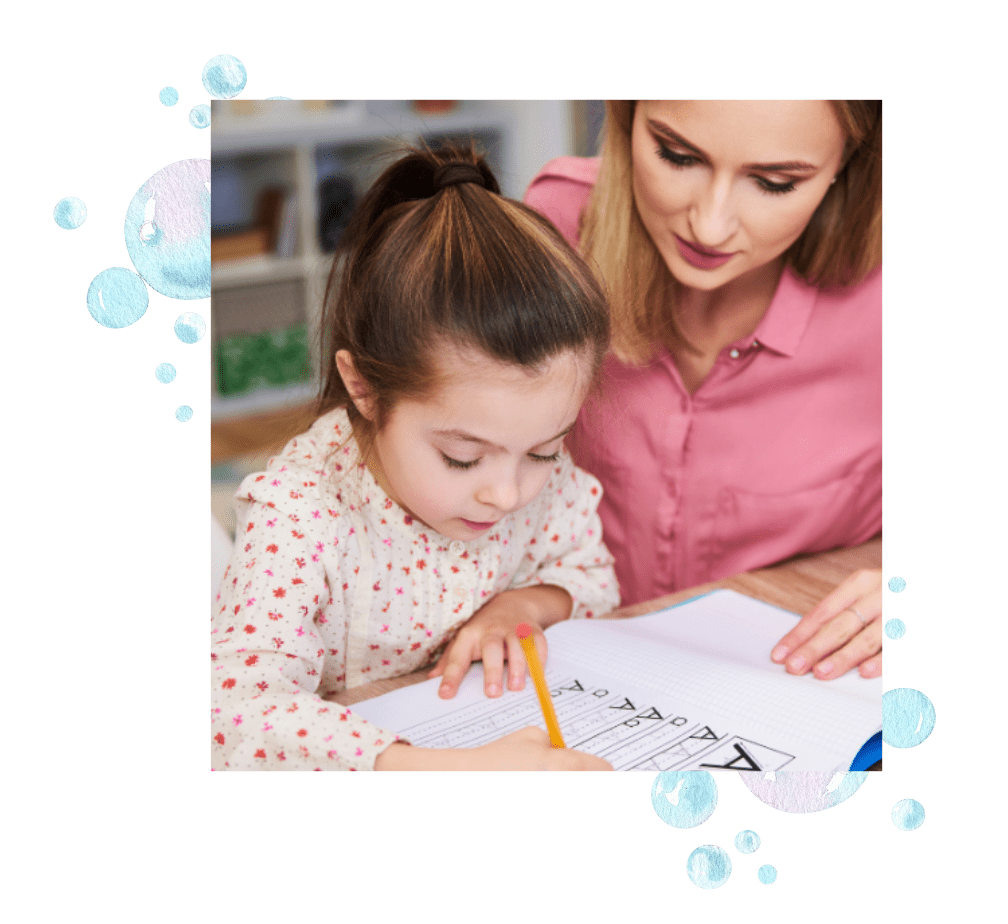
Whew! When you look at that list, it’s amazing that any of us can read, write, spell, or remember how to add, subtract, multiply or divide!
For most kids, visual memory skills develop naturally. But if your child has dyslexia or another visual processing issue, visual memory skills can be weak, making the above mentioned skills difficult. Reading is hard, especially decoding and comprehension. Test scores are low, and grades suffer.
Your child should be able to hold one symbol in visual memory for each year of age until age seven. This means that a seven-year old child should be able to hold seven images in visual memory. Any child older than seven should also hold seven images or symbols in memory.
If your child has weak visual memory, it could mean a visual processing disorder is at play.

Since each letter of a word is a symbol, this visual memory ability enables your child to sound out multi-syllable words which often contain around seven letters.
If your child has a visual memory issue, it’s as though there isn’t enough “glue” in the brain to hold these symbols in place. This affects how your child reads.
If only three or four images can be held in visual memory, then a child will only be able to read three and four letter words with ease. If the word has more than three or four letters, the “glue” just isn’t there.
The Great Importance Of Visual Processing Skills In Learning
Even though these kids with visual memory issues are often bright, their reading and academic performance suffers because of it.
Visual memory is very important for reading because it helps kids remember what words look like. When kids can remember words they have seen before, they can read faster and with less effort. This makes it easier to understand stories and learn new information. For example, if a kid remembers what the word “cat” looks like, they don’t have to sound it out every time they see it.
Visual memory also helps kids recognize letters and their shapes. This is important for spelling and writing words correctly. If a kid can remember how letters and words look, they can write them without mistakes. Practicing visual memory skills can help kids become better readers and writers, making schoolwork easier and more enjoyable.


Eye Muscle Movement:
If your child is struggling to read, it might be because of weak eye muscles. Did you know we have two eyeballs, each held in place by six muscles? These twelve muscles control the movement of the eye, and if the movements are jumping or jerking, it will be difficult for your child to focus on the print of a book or page.
Who Would Think Twelve Muscles Would Be So Important?
Usually, visual processing disorders don’t formally take eye muscle strength into consideration, but it can affect how a child reads and performs.

If this happens, then most likely, your child will perceive the text or print incorrectly. The words or letters might seem to be moving, jumping, or jerking. Halos or shadows might wrap around the words. The print might run uphill or downhill. Many other “distortions” can happen.
When your child’s eye muscles are weak, it’s difficult to fluidly sweep the eyes across a page while reading. When this happens, then reading fluency is affected, as it takes longer than expected to decode the words. It’s simply too laborious.
Comprehension is also affected because your child is focusing so hard on the actual decoding that focus isn’t placed on meaning.
Connecting The Eye Muscles And Visual Processing With Strong Academics
Eye muscle movement is very important for reading because it helps kids move their eyes smoothly across the page.

When kids read, their eyes need to follow the words from left to right without jumping around. Strong eye muscles make sure that kids can focus on each word and move to the next one easily.
If their eye muscles aren’t strong, they might lose their place or skip words, making reading hard to understand.
Good eye muscle movement also helps kids read faster and with better understanding. When their eyes move smoothly, they can focus on the meaning of the story instead of just trying to see the words. This makes reading more fun and helps kids learn new things more easily. Practicing eye muscle movements can help kids become better readers and enjoy books even more.
Reading For Life: How Eye Muscles Affect Reading Skills
Eye muscles movement is very important for reading because our eyes need to move smoothly across the words on a page. When we read, our eyes have to jump from one word to the next quickly and accurately.

This movement, called saccades, helps us take in information and understand what we are reading. If our eye muscles are strong and well-coordinated, we can read faster and with better comprehension.
If they are not, reading can become tiring and difficult, making it harder to keep up in school.
Another reason eye muscle movement is important is that it helps us focus on the words we are reading. Our eyes have to stay still enough to clearly see each word, but they also need to move to the next word smoothly.
This balance of movement and focus is crucial for reading fluently. When your child’s eyes can do this well, then stories can be enjoyed. Your child is able to learn new things and complete homework without problems.
Practicing eye muscle movements through activities like reading aloud, tracking moving objects, and playing visual games can help make our eye muscles stronger and our reading skills better.


Suppression:
Suppression is the intermittent “shutting” down of an eye by the brain. Basically, it is when one eye doesn’t work as well as the other, causing the brain to ignore the weaker eye. This can harm the ability to read because both eyes need to work together to see clearly. When one eye is suppressed, it becomes harder to focus on the words and letters on a page.
Strengthen Your Child’s Eyes For This Skill!
In addition, eye suppression can make reading slow and confusing. Kids with eye suppression issues might skip lines, mix up letters, or struggle with understanding what they read. Making both eyes strong and helping them work together is important for good reading skills and teaching kids how to enjoy books.
If your child has suppression issues, the stronger eye will take over while the weaker eye continues to lose its strength and effectiveness. It will pop in and out of your child’s field of vision throughout the day, which is in essence, causing your child to go “blind” in that eye for a short period of time. If your child has eye suppression, it can be part of a bigger visual processing disorder.

Of course, eye muscle weakness isn’t the only cause of suppression, but this can really make reading hard for your child. Although your child most likely won’t notice when suppression happens, it’s a “glitch” in the flow of learning. A minuscule pause takes place while the brain switches your child’s vision off and then on.
Suppression will obviously affect how your child is able to not only read but to write and perform other academic skills as well. If your child has poor reading fluency, suppression might be part of the cause, as one of the eyes is going “blind” at times. Because of this, it’s difficult for your child to keep up with the necessary decoding skills that must go on for grade level fluency norms.
Eye Suppression Keeps Kids In The Dark
Eye suppression happens when one of your eyes doesn’t work as well as the other one when you’re reading. This can make it hard for kids to see words clearly and keep their place on the page. When one eye isn’t working right, it’s like trying to see with only one eye closed. This can make reading slower and more confusing because the words might not line up correctly.
When kids use eye suppression, they might skip words or get mixed up on where they are in the story. This makes it harder to understand what they’re reading and can make reading less fun. To get better at reading, it’s important for kids to use both eyes together. Working on eye problems with a teacher or eye doctor can help make reading easier and more enjoyable.


Accommodation:
Accommodation is the ability to focus the eyes from far to near in an easy, fluid manner. This is most frequently seen where your child is sitting in a desk at school while looking at the board. Your child might have to then write down a note from the lecture.

If accommodation skills are weak, your child will have a difficult time regaining focus while looking at the new place of focus – the book or notebook on the desk. Visual processing disorder take accommodation into play, noting how important this skill is to school success.
If your child has poor accommodation skills, school is a difficult, frustrating place. It’s too hard to transition from the board then back to the notebook on the desk, take appropriate notes, then look back up to the board. With poor accommodation skills, your child is always a step or two behind, never feeling caught up or fully understanding what is going on in class.
Rev Your Child’s Reading Engine With Strong Accommodation Skills
Accommodation doesn’t have to take place from a large surface like the board and then back to a smaller surface like a book on a desk. Copying notes from a textbook into a notebook is another example of accommodation. Even reading involves a bit of accommodation.
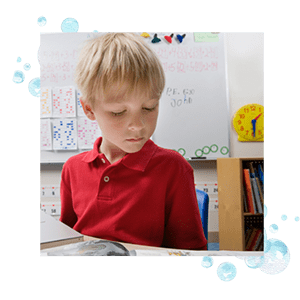
When your child reads on one page and then transitions to another page, a dose of accommodation takes place.
If there are weaknesses, then your child is a beat behind everyone else while trying to adjust focus on the new page. This is enough to affect reading fluency, slowing down reading times due to a “glitch” in processing.
Accommodation is a focusing issue, although regular glasses won’t usually correct this problem. Children with accommodation issues can practice focusing from near to far and back again – over and over again – to strengthen this important visual processing skill.


Visual Perception Skills:
Visual perception skills are the brain’s interpretation of what has been seen. It’s highly important that the brain and visual system connect so it’s easy to perceive visual stimuli.
How Visual Perception Skills Help Your Child Make The Grade
If your child has poor visual perception skills, then visual information will be seen in a distorted, incorrect way. It is skewed, coming in at odd angles, upside down, or moving and wiggling. Visual processing disorders will often reveal weak visual perception skills.

If your child has weak visual perception skills, then it will be difficult to tell the difference between written letters, words, and punctuation marks.
If these symbols aren’t perceived correctly, then it’s difficult to be a fluent reader. Your child will stammer and stutter, working too hard to decipher the codes of our language. Comprehension suffers as well, as meaning is changed when these symbols are perceived incorrectly.
Writing, spelling, and math also take a hit with poor visual perception skills. If your child is bright and verbal, but grades don’t reflect potential, it might be a vision perceptual issue, especially if decoding words is difficult.
Unlocking Literacy – The Hidden Value Of Visual Processing Skills
Visual perception skills are very important for reading because they help kids understand where words and letters are on a page. These skills help kids know the difference between letters like “b” and “d,” and words like “was” and “saw.” If kids can tell where things are and how they are spaced, they can read more easily and make fewer mistakes. This makes reading smoother and more fun.
Visual spatial skills also help kids follow the lines of text from left to right. When kids know how to move their eyes across the page, they don’t lose their place or skip lines. This helps them read faster and understand the story better. Practicing visual perception skills can make kids better readers and help them enjoy books even more.


Visual Figure Ground:
Visual figure ground is the ability to focus on and identify a specific item as separate from its background. If your child has weak visual figure ground skills, then it will be difficult to tell the difference between objects and the background they are up against.
From Back To Front: This Visual Processing Skill Is Subtle At Best!
Once again, this skill pops up in visual processing disorders, as it’s important to be able to ignore unimportant visual stimuli.
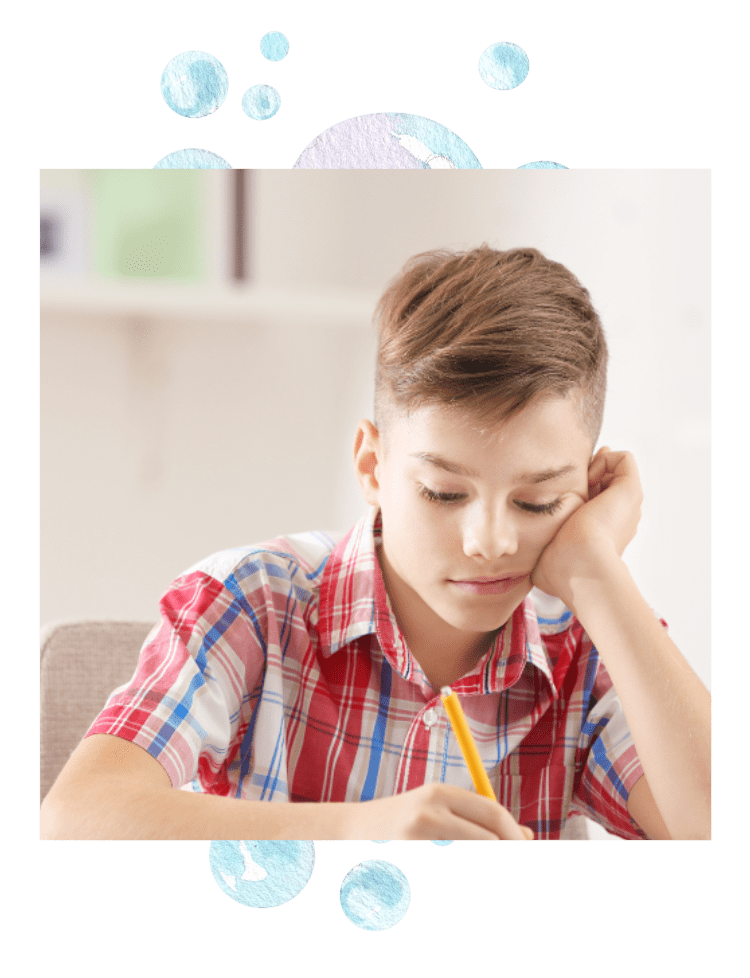
Strong visual figure ground skills enable your child to locate precise visual information in the midst of a cluttered context and filter out irrelevant surrounding items. Difficulties occur when your child is unable to identify objects from the surfaces they are on or from other objects which overlap against them.
If your child has poor visual figure ground perception, then it is difficult to find specific text on a page or to distinguish between letters with a similar appearance, such lowercase “n”, and “r”.
Obviously, this mis-perception affects your child’s ability to read, write, spell, and perform math computations correctly. It is simply too difficult to judge where letters and numbers start and finish, how to weed out unimportant visual stimuli, and how to make sense of the jumble that appears to them in a variety of different ways.
How To Navigate The Page With Visual Processing Skills
Visual figure-ground skills are important for reading because they help kids find words on a busy page. This skill allows kids to focus on the words they need to read while ignoring pictures or other text around them. For example, if there is a picture or decoration on a page, kids with good visual figure-ground skills can still find and read the words easily. This makes reading smoother and helps kids understand the story better.
When kids have strong visual figure-ground skills, they can also find the start of the next line without getting confused. This helps them keep their place and read without skipping lines. Practicing these skills can help kids become better readers and enjoy their books more, even when the pages are busy or colorful.


Visual Motor Integration:
Visual motor integration is the ability to coordinate visual perceptual skills with gross and fine motor movements while integrating visual input with motor output. Whew! That’s a mouthful! An easier to understand definition is simply…the ability for the eyes, the hands, and the brain to communicate with each other in an efficient manner.

Visual processing disorders take visual motor integration into play, as this relationship between the hand, the brain, and the eyes is very important.
If your child struggles with visual motor integration skills, then writing will be difficult. It will be difficult keeping letters on the lines as well as forming cohesive sentences and paragraphs. In addition, handwriting will be poor or illegible.
Obviously, writing carries over into spelling and math, so these subjects will also reflect this struggle. Math problems won’t line up correctly, so the answer is often wrong, even though the process and computation might have been done correctly. Artwork will be messy or immature.
The Amazing Harmony Of Visual Motor Integration
Your child’s writing might bunch together without spacing between words. Or, the words might flow up or downhill, making it difficult to read. Copying from the board or from one surface to another might be a struggle as well.

Since visual motor integration involves processing visual stimuli, reading can be affected, too.
There is a small amount of motor function required to read – such as turning a page. This can slow your child down.
In addition, if your child has a visual motor integration issue, the eyes and the brain need to communicate, and that communication might be delayed, skewed, or processing information correctly.
This affects both fluency and comprehension, as meaning gets changed when visual information isn’t processed correctly. Overall, if visual motor integration skills are weak, your child’s grades will suffer.
Excellent Visual Motor Integration Skills Make School Easy!
When we read, our eyes move across the words, and our hands might follow along to keep our place. Good visual motor integration makes it easier to see and remember the shapes of letters and words. It also helps us write neatly and quickly.

If these skills are weak, reading and writing can be harder, making it tough to keep up with schoolwork. Practicing activities like drawing, tracing, and playing catch can help improve visual motor integration and make reading easier and more fun.
In addition, visual motor integration skills are very important for reading because they help kids use their eyes and hands together. This means they can follow the words on a page with their eyes while using their finger to keep their place.
It also helps them write letters and words neatly. When kids have strong visual motor integration skills, they can read and write more easily, making schoolwork more fun and less frustrating.


Visual Sequential Memory:
Visual sequential memory is the ability to recall objects or figures in the order originally seen. If your child has weak visual sequential memory, then letters will be missing in words or words might be reversed or transposed.
Visual sequential memory is important for reading because it helps your child remember the order of letters and words. When your child reads, it’s important to see and remember the sequence of letters in each word.
Order Counts In This Important Visual Processing Skill
In addition, your child must understand what is being read. If your child mixes up the order, the words won’t make sense.
Good visual sequential memory helps your child read words correctly and remember what was read. This skill also helps your child spell words in the right order while writing. Playing memory games, doing puzzles, and practicing reading can help strengthen your child’s visual sequential memory and make reading easier.
If visual sequential memory skills are weak, your child might also add letters to words. This of course, affects reading, writing, and spelling. When this skill is weak, it pops up in visual processing disorders.

For math, it might be difficult to remember formulas, steps in problems such as long division, and recall math facts.
Reading can be affected by poor visual sequential memory skills as well. Your child will misread words because the lineup of the letters gets confused.
It’s difficult to remember what the meaning of words are because the letters are mixed up within the word, misplaced, or have missing letters.
Obviously, both fluency and comprehension are affected by poor visual sequential memory because words are read incorrectly. If your child struggles with this skill, then backtracking becomes the norm. Incorrect or missing information is read and this slows down the flow of learning.
The Big Adventure Of Mapping Out Words
Visual sequential memory is important for reading because it helps kids remember the order of letters in words. When kids can remember the order of letters, they can read words correctly.

For example, they can tell the difference between “top” and “pot” because they remember the letters’ sequence. This helps them read more easily and understand what they are reading.
Visual sequential memory also helps kids follow the order of sentences and stories. When they can remember what comes first, next, and last, they can understand the story better.
This skill makes reading more fun because kids can keep track of the story and enjoy it more. Practicing visual sequential memory can help kids become better readers and enjoy books even more.


Saccadic Eye Movement:
Saccadic eye movements are rapid motions made by the eyes. Proper tests for visual processing disorders will reveal saccadic eye movements and exercises to help improve weak skills. These movements will quickly and abruptly change the point of fixation as your child’s eyes move across a page while reading.
Rapid Eye Movements Make For Fast Thinking and Learning
This sounds very complicated, but really, it’s just the stopping and starting of the eyes as they fix on symbols while moving.

If you look out into space and then look down at your phone, your eyes moved, fixating on the end point – your phone. This is actually an example of saccadic eye movements on a broad sense.
As far as reading is concerned, it’s important how your child’s eyes move across a page, those stops and starts doing exactly what they are intended to do.
Movements should be fluid while reading. When your child’s eye picks up information, such as noticing a capital letter or a punctuation mark, it will stop for the briefest moment, fixating on the symbol.
It then gets right back to flowing smoothly across the page until another stop is necessary.
When everything works right, it will go as described above. But if your child has problems with saccadic eye movements then the pauses might be too long. The stops too abrupt. The motions not fluid when reverting back to sweeping across the page.
Saccadic eye movements can range from minuscule (like sighting in on a particular letter) to more broad movements (like looking across a room or out into space). They can occur voluntarily but also happen as a reflex.
Eyes On The Prize: How To Improve Reading Skills With Saccadic Movements
Efficient reading involves the coordination of the eyes with the cognitive system as these saccadic movements take place.

The cognitive system is responsible for choosing the target then communicating to the eye that it must move after stopping on the chosen target. The eye muscles are responsible for the actual movement taking place.
Saccadic eye movement is important for reading because it helps kids quickly move their eyes from one word to the next. When kids read, their eyes need to jump smoothly across the page to see each word in the right order.
If their saccadic eye movements are not strong, they might skip words or lose their place, making it harder to understand the story. Practicing these eye movements can help kids read more easily and enjoy their books more.


Spatial Awareness:
This visual skill is an organized awareness of objects in space around us as well as an awareness of our body’s position in space.
These very important visual processing skills are important for reading because they help your child understand where things are on a page. When your child reads, it’s important to know where to start and where to go next. Spatial awareness helps your child keep place on a page, recognize the spaces between words, and follow sentences from left to right.
How Spatial Awareness Skills Make Reading A Breeze
In addition, spatial awareness abilities help your child understand the layout of a page, such as where paragraphs begin and end. If your child’s spatial awareness ability is strong, reading is smoother and easier. Activities like drawing, building with blocks, and playing sports can help improve your child’s spatial awareness skills.
Without this awareness, your child would not be able to do something as simple as pick food up from a plate and place in the mouth. Even reading is affected. It’s difficult to see letters in correct relation to each other and to the page if spatial awareness skills aren’t strong.

Kids with visual processing disorders and dyslexia often reveal poor spatial awareness skills. Spatial awareness requires that we have a model of the three-dimensional space around us, and it requires that we can integrate information from all of our senses.
Studies have suggested a link between a well-developed sense of spatial awareness and artistic creativity as well as success in math. It can also be important in organizing and classifying abstract mental concepts in space. Visual thinkers, in particular, will tend to use spatial awareness to organize abstract thought.
Strong spatial awareness skills help your child visualize images in the mind, which helps promote visual memory skills. This helps your child retain information that was read, which in turn, raises reading comprehension scores.
Boost Your Child’s Reading Abilities With Strong Spatial Skills!
If your child struggles with spatial awareness, then math and executive functioning skills might be difficult. Obviously, fine motor skills would be affected, and this carries over to handwriting as well.

Even social skills can be affected by poor spatial awareness abilities. Kids with poor spatial skills don’t understand personal space and will often interfere with someone else’s “space bubble”.
This can lead to peers shying away from them. These kids also have a more difficult time reading facial expressions and other visual cues that lead to proper social awareness skills.
If your child struggles with spatial awareness, the jigsaw puzzles might be avoided at all costs. Even playing with Legos might not be a fun activity! That’s because it’s difficult to see how these shapes form together in space.
Putting The Pieces Together: It’s Not That Hard
Spatial skills help kids understand how things fit together and where they are in space. For example, if you are building with blocks, spatial skills help you know where to put each block so that your tower doesn’t fall over. These skills also help kids follow directions, like knowing which way to turn when given instructions. Good spatial skills make it easier to understand how different parts of a picture or a puzzle fit together.
In reading, spatial skills are important because they help kids see how words and sentences are arranged on a page. If kids can understand the layout of the text, they can follow along more easily and keep their place. Strong spatial skills make reading smoother and help kids enjoy their books more because they can see how the story fits together better.


Binocular Teaming:
This is the process of both eyes working together, providing accurate information to the brain. Binocular teaming and stereopsis (the working together of both eyes to provide different but integrated views to the brain which are translated into one clear image) are important visual processing skills. Visual processing disorders will reflect poor binocular teaming.
This One’s The A Team…And More!
Binocular teaming is important for reading because it helps both eyes work together to see one clear picture. When both eyes team up, we can focus on the words on a page without seeing double or blurry images. This makes it easier to read smoothly and understand what we’re reading.
Good binocular teaming helps us move our eyes across the page and keep our place in the text. If our eyes work well together, reading is more comfortable and fun. Playing games that involve catching or following moving objects can help strengthen binocular teaming skills and make reading easier.

Together, they are responsible for providing depth perception. Depth perception is the ability to see things in three dimensions, including length, width, and depth. This enables you to judge how far away or up close an object is in space.
If your child has poor depth perception because of binocular teaming issues, then words on a page can appear to be jumping or moving about. They might be blurry or hazy. Halos or shadows might appear around the letters or words. Your child might fidget or become restless while reading or doing school work. This makes it difficult to follow the words on a page while reading and exhaustion sets in.
If your child can only read a paragraph or two before wanting to stop, binocular teaming issues might be the problem. This affects reading fluency, because your child can’t keep up with the demands of grade level expectations. The process of decoding words that aren’t holding still is just too difficult.
It’s A Win With Binocular Teaming And Strong Reading Skills
Reading comprehension takes a hit as well. It’s too easy to misread words and transpose letters when the print isn’t holding still. Mistakes your child makes directly and indirectly affect meaning. They become so tired from the decoding process that focusing on meaning becomes too difficult.
Of course, binocular teaming issues affect all areas of schoolwork, not just reading. Binocular teaming problems make the visual information your child takes in inaccurate, which impacts spelling, writing, and math.
The Binocular Team – Strong, Proud, and Sure
Binocular teaming helps kids read better by making sure both eyes work together as a team. When both eyes look at the same word at the same time, it’s easier to see and understand what’s on the page.
If the eyes don’t team up properly, it can be hard to focus on the words, and kids might see double or lose their place. Good binocular teaming helps kids follow along smoothly and read without getting tired or confused. This makes reading more fun and less frustrating!


Directionality:
Students with dyslexia and other visual processing problems often suffer with directionality issues. Directionality is the ability to understand and use directions such as left, right, over, under, beside, and above.
The Best Directions Of All!
If your child struggles with directionality issues, then it’s difficult to understand where objects are in relation to the body. Your child might seem “lost” a lot of the time, unorganized, and confused when given oral directions. Often, clumsiness is an issue.
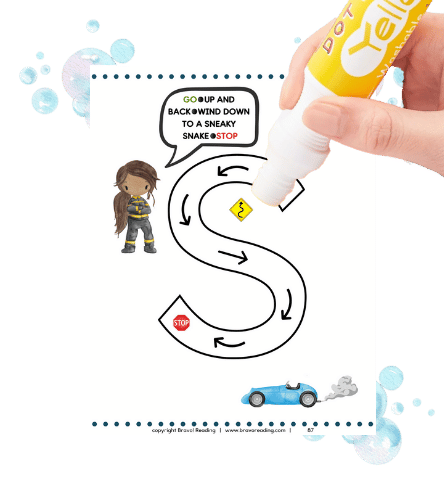
Written work might reveal a lot of reversals as well. This affects letters, words, and numbers. Reversals pop up. When your child reverses a lot, it could be dyslexia. Visual processing disorders might also be at play.
Directionality issues certainly affect reading. It’s hard for children with directionality issues to read at the top of the page. They also have a hard time continuing in a left to right fashion.
They get lost along the way and have a difficult time staying on task. They “weasel” their way out of reading and wander off, the task too difficult for them.
If your child struggles with directionality, they often reverse, transpose, and mis-perceive the words on a page. Of course, poor directionality skills affect reading fluency, since decoding is such a laborious task.
Your child will stumble over words, and this slows down expected fluency expectations. In addition, comprehension takes a hit because your child misreads many words. These errors change the meaning of the text, causing them to fail tests and receive lower grades.
This One Thing Makes Reading Hard For Your Child
If your child has directionality issues, then doing something as simple as a worksheet can cause problems, ending in tantrums, meltdowns, or retreating. This is because it’s too difficult to determine where to start on the page and how to move through the page in a logical sequence.
If your child doesn’t start at the top left hand side of a page and move through each line from left to right, it might be a directionality issue. It’s difficult to do this simple task, and your child ends up skipping around all over the place. Of course, skipping too many questions and problems results in incorrect answers.
Up, Down, Or In Between: It’s All In The Directions
Drectionality issues in kids make it hard for them to understand which way things should go. For example, they might confuse left and right or struggle to know whether to read from left to right or right to left. This can make reading tricky because they might mix up words or sentences.
Practicing directionality skills helps kids learn the right way to read and follow directions, making reading and other activities easier and more fun.
Visual processing disorders such as directionality problems can be frustrating for kids!


Visual Synthesis
Pulling bits of visual information together can be difficult for some children. The brain then interprets it as a whole image. Visual synthesis is similar to visual figure ground except there isn’t necessarily something in the background distracting the learner from figuring out what the figure or object is.

Order is important for visual synthesis, so obviously it affects reading. If visual synthesis is weak, the reader might mix up letters or see them as the wrong size. Capitals might appear as lower case letters.
If your child has poor visual synthesis, they might see only parts of letters or words or mix up the order of the letters. This, obviously, affects reading fluency as decoding is quite difficult to do.
When kids have visual processing disorders, then sounding out words is hard. The perception of letters or words isn’t necessarily correct. When your child struggles with visual synthesis, it also affects writing and other skills.
If your child does not read or decode words correctly, they change the meaning, and reading comprehension suffers.It’s difficult to recall and place letters in correct order, so even getting a sentence down on paper might be a challenge. Lining up math problems and using math formulas can be equally as hard.
Piecing It Together: The Great Mystery Of Visual Synthesis
Visual synthesis is important for reading because it helps kids put together pieces of information to understand what they’re reading. When kids use visual synthesis, they can combine letters and words to see the whole story. For example, when they read, they need to piece together letters to form words and then understand those words in sentences. This helps them see how the words fit together to make sense.
Without strong visual synthesis skills, it can be hard for kids to make sense of sentences and stories. They might have trouble connecting words and understanding what they mean. Practicing visual synthesis can make reading easier and more enjoyable, helping kids understand stories better and follow along with their books.
